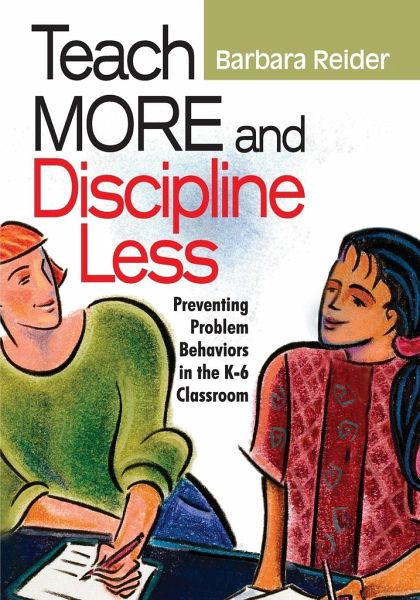
Teach More and Discipline Less
Preventing Problem Behaviors in the K-6 Classroom
Versandkostenfrei!
Versandfertig in 1-2 Wochen
35,99 €
inkl. MwSt.

PAYBACK Punkte
18 °P sammeln!
Drawing on the wisdom of master teachers and her own extensive classroom experience, Reider explains how to empower students while establishing an "invisible" authority in the classroom.














